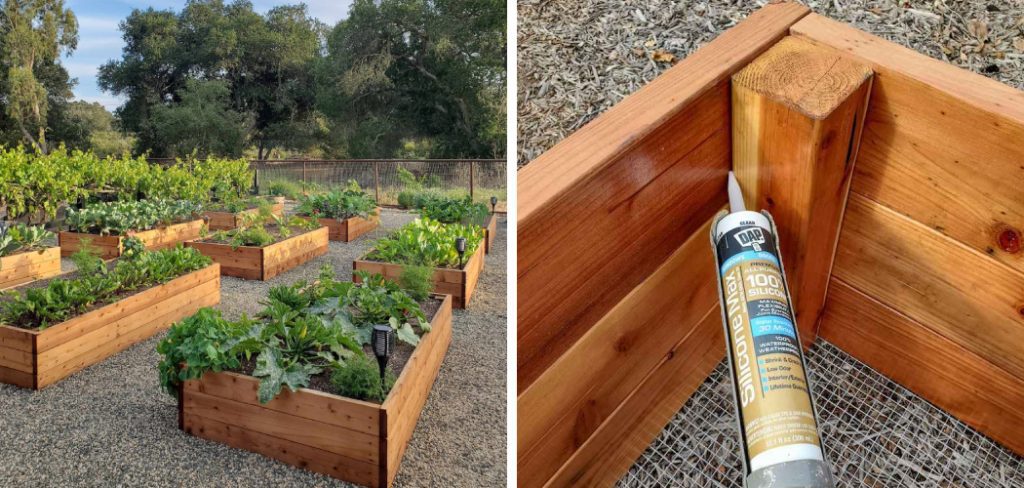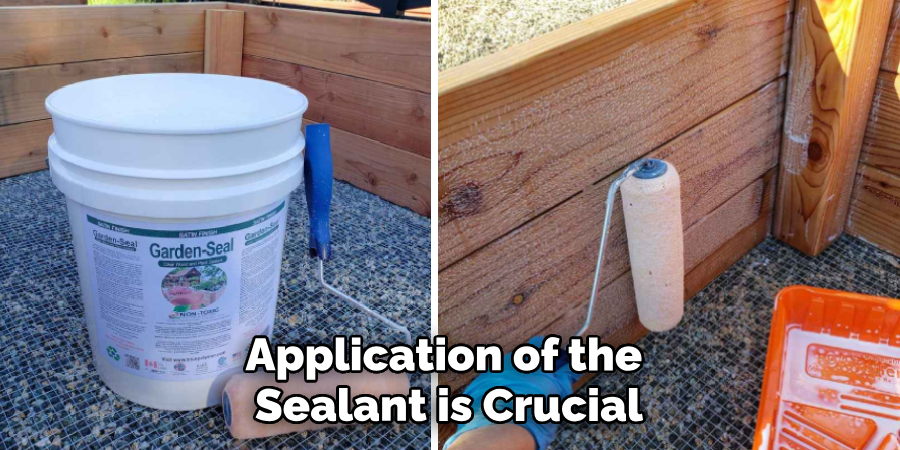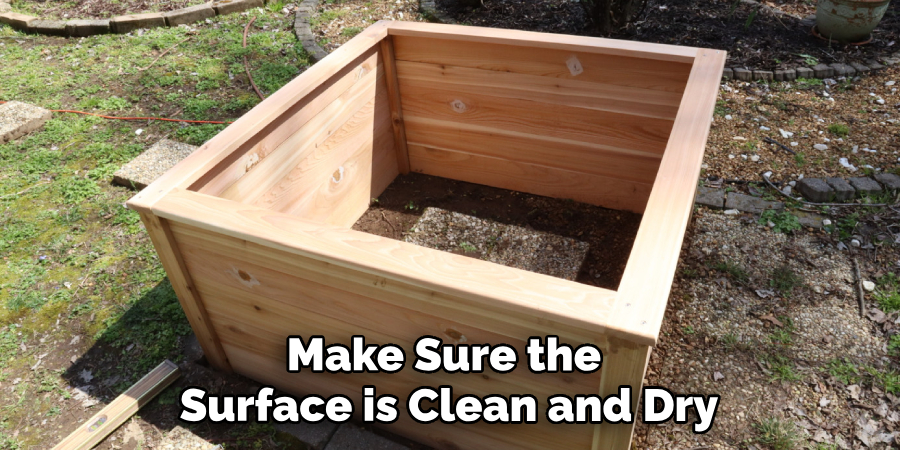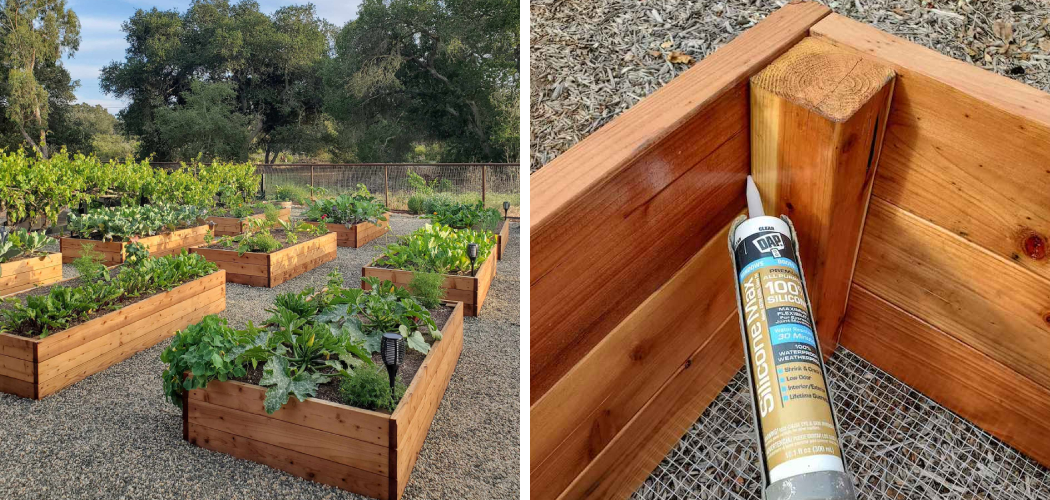To seal wood for raised garden beds, apply a water-based sealant and let it dry completely before filling the beds with soil and plants. Wooden raised garden beds offer a practical and attractive solution for growing your own vegetables and flowers.
However, without proper sealing, the wood can quickly deteriorate due to exposure to water and soil. Sealing the wood not only enhances its lifespan but also helps prevent rotting and warping. Luckily, the process of sealing wood for raised garden beds is simple and straightforward.
In this article, we will explore the step-by-step method of sealing wood for raised garden beds, allowing you to enjoy a durable and long-lasting gardening solution. Read on to learn more!

The Importance Of Sealing Wood For Raised Garden Beds
Sealing wood for raised garden beds is of utmost importance to protect your investment and extend the lifespan of your garden beds. By sealing the wood, you create a barrier that shields it from moisture, uv rays, and other environmental elements that can cause decay and deterioration.
This helps prevent rotting, warping, and splitting of the wood, ensuring that your garden beds remain sturdy and functional for years to come. Additionally, sealing the wood also helps to resist pests and insects that may otherwise infest the untreated wood.
To seal the wood effectively, you can use various products such as linseed oil, clear sealants, or water-based stains. Regular maintenance and resealing may be necessary to ensure continued protection. By taking the time to seal your wood for raised garden beds, you are investing in their longevity and the success of your gardening endeavors.
Choosing The Right Sealant For Your Raised Garden Beds
Choosing the right sealant for your raised garden beds requires careful consideration for outdoor use. One important factor is eco-friendliness. Water-based sealants are often considered more environmentally friendly than oil-based options. Water-based sealants are also easier to clean up and don’t emit harmful fumes.
On the other hand, oil-based sealants tend to offer more durability and protection against moisture. Consider the specific needs of your garden beds, such as exposure to rain or extreme weather conditions. Additionally, think about the appearance you desire for your wood.
Some sealants might enhance the natural color, while others may darken it. Remember, in your quest for the perfect sealant, prioritize both functionality and sustainability.
Step-By-Step Guide On Sealing Wood For Raised Garden Beds
Sealing wood for raised garden beds is an essential step to ensure their longevity and durability. To prepare the wood surface, start by sanding it to remove any roughness or splinters. Next, clean the wood thoroughly to remove dust and dirt.
When applying the sealant, use a brush or roller to evenly coat the wood. Make sure to cover all surfaces, including the ends and edges. Allow the sealant to dry completely before moving the wood or adding soil. The drying and curing process may take up to 24 hours or longer, depending on the type of sealant used.
It is important to follow the manufacturer’s instructions for optimal drying time. By properly sealing the wood for your raised garden beds, you can protect them from rot, moisture damage, and pests, and ensure they have a longer lifespan.
Preparing The Wood Surface
To ensure a properly sealed wood surface for your raised garden beds, follow these steps. Begin by sanding the wood to achieve a smooth finish. Remove any dirt or debris that may be present on the surface. Make sure the wood is completely dry before proceeding with the sealing process.
By adhering to these instructions, you will create an ideal environment for your plants to thrive in your garden beds. Achieving a smooth and properly sealed wood surface is crucial for the longevity and durability of your garden beds. Enjoy the process of preparing the wood and take pride in your beautifully crafted raised garden beds.
Applying The Sealant
When sealing wood for raised garden beds, the application of the sealant is crucial. Brushing or spraying the sealant on the wood are two common methods. Some prefer brushing to ensure even coverage, while others opt for spraying to save time.

Whichever method you choose, it is essential to apply multiple coats for better protection against weathering and decay. Make sure to apply the sealant to all surfaces of the wood, including the ends, edges, and any exposed grain. This will help create a barrier that prevents moisture from penetrating and damaging the wood.
By following these steps, you can effectively seal your wood for raised garden beds, promoting longevity and preserving the beauty of your garden space.
Proper Drying And Curing Process
Properly drying and curing wood for raised garden beds is crucial. Take sufficient time for drying the wood to prevent future issues. Avoid exposing the wood to moisture during the curing process. This can lead to warping, mold, and decay.
After drying, check for any touch-ups that may be needed. Sand down rough edges or uneven surfaces. Apply a wood sealer to protect the wood from moisture, pests, and the elements. Make sure to choose a sealer that is safe for plants and vegetables.
Applying multiple coats can provide extra protection. Avoid using commonly overused phrases and words to maintain a unique and engaging tone. Following these steps will ensure your raised garden beds are sealed properly and will last for years.
Tips And Tricks For Maintaining Sealed Wood Garden Beds
Maintaining sealed wood garden beds for raised garden beds requires regular inspections and touch-ups. Cleaning and resealing should be done when necessary to ensure longevity. Extreme weather conditions can be detrimental to the wood, so it’s important to protect it.
By following these tips and tricks, you can keep your garden beds in top condition, providing a sustainable and attractive space for your plants to thrive. Keep an eye out for any signs of wear or damage, and promptly address any issues with a fresh coat of sealant.
Don’t forget to clean the beds periodically to remove dirt, debris, and stains. Additionally, consider using weatherproof covers during extreme weather events to shield the wood from excessive rain, snow, or sun exposure. By taking these steps, you can enjoy your raised garden beds for years to come.
Frequently Asked Questions For How To Seal Wood For Raised Garden Beds
What Is The Purpose Of Sealing Wood For Raised Garden Beds?
Sealing wood for raised garden beds helps protect it from weathering, rot, and insect damage, prolonging the lifespan of your garden beds and ensuring they stay in good condition for years to come.
How Often Should I Seal The Wood On My Raised Garden Beds?
It is recommended to seal the wood on your raised garden beds every 2 to 3 years to maintain their durability and prevent moisture damage. However, this can vary depending on the type of wood and your local climate conditions.
What Type Of Sealant Should I Use For My Raised Garden Beds?
For raised garden beds, it is best to use a non-toxic, food-grade sealant or wood preservative to ensure the safety of your plants. Look for products that are specifically formulated for outdoor use and are safe for use around edibles.
How Do I Apply Sealant To The Wood On My Raised Garden Beds?
To seal the wood on your raised garden beds, make sure the surface is clean and dry. Apply the sealant evenly using a brush or sprayer, following the manufacturer’s instructions. Allow the sealant to fully dry before filling the bed with soil and planting.

Can I Use Natural Oils To Seal The Wood On My Garden Beds?
Yes, natural oils like linseed oil or tung oil can be used to seal the wood on your garden beds. These oils penetrate the wood, providing protection and enhancing its natural beauty. Just make sure to choose products that are suitable for outdoor use and safe for plants.
Are There Any Alternative Methods For Protecting Wood On Raised Garden Beds?
Yes, you can also consider lining the interior of your raised garden beds with a waterproof liner, such as plastic or landscape fabric, to create a barrier between the soil and the wood. This can help prevent moisture from directly contacting the wood, reducing the need for frequent sealing.
Conclusion
To prevent your wooden raised garden beds from deteriorating and ensure their longevity, sealing the wood is essential. By following these simple steps, you can effectively seal your garden beds and protect them against moisture and weather elements. Begin by cleaning the wood surface to remove any dirt or debris.
Next, apply a wood preservative or sealant using a brush, roller, or sprayer, ensuring complete coverage. Allow the sealant to dry thoroughly before proceeding. Once dry, inspect the garden beds for any missed areas and apply a second coat if necessary.
Remember to choose a sealant that is safe for vegetable gardens. Finally, let the sealant cure as per the manufacturer’s instructions before adding soil and planting your favorite fruits, vegetables, or flowers. With proper sealing, your wooden raised garden beds will stay protected and provide an ideal environment for your plants to thrive.
Start sealing and enjoy a bountiful harvest from your garden beds for years to come.

